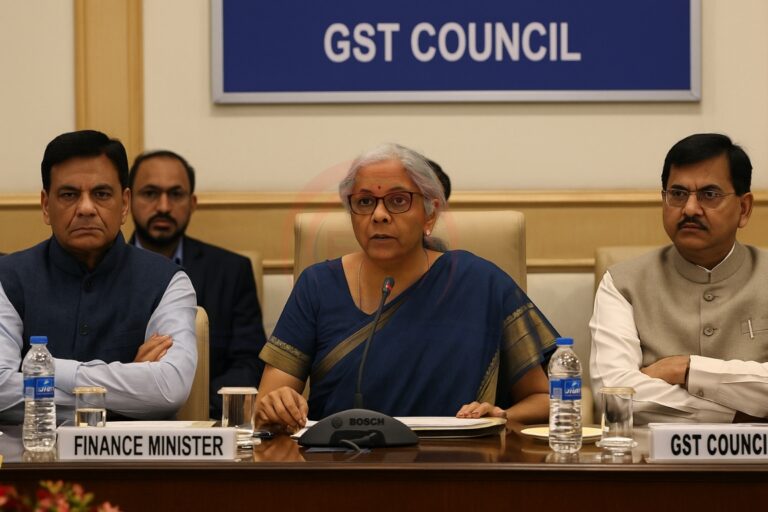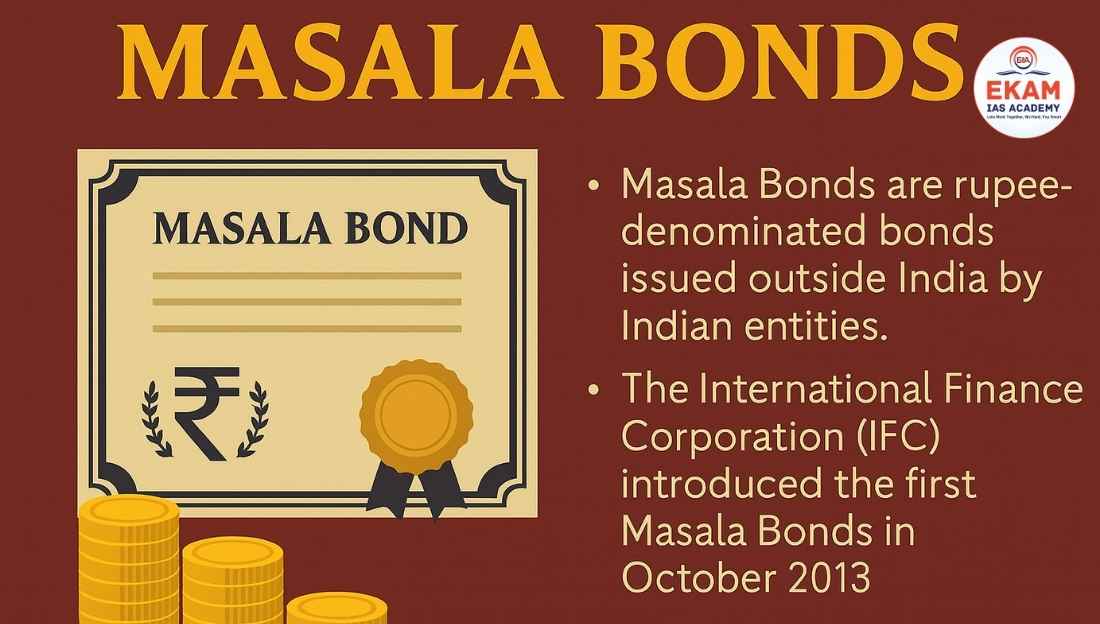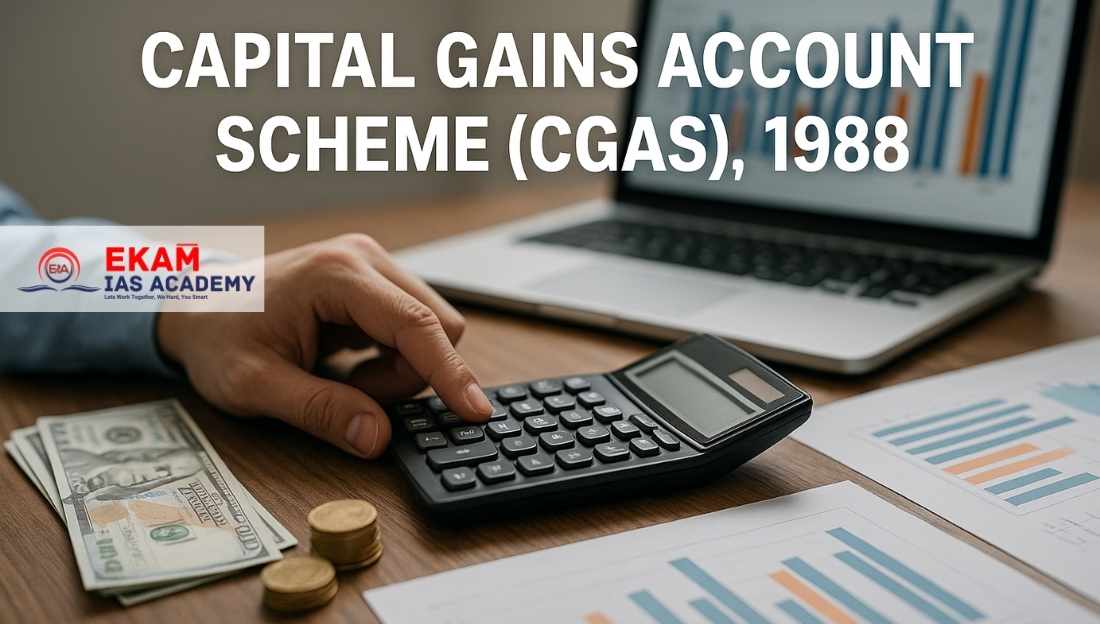The GST Council, chaired by Finance Minister Nirmala Sitharaman, has approved a new two-rate GST slab structure effective September 22, 2025, aimed at reducing the burden on common-use goods and essential services. The move is expected to make household products, medicines, and insurance more affordable while ensuring higher taxes on luxury and tobacco items.
Key Decisions of the Council
- Two major slabs fixed at 5% and 18%, along with a special 40% rate for tobacco and luxury products.
- Rate changes will take effect from September 22, except for tobacco-related goods which will shift later to 40%.
- Estimated fiscal implication: ₹48,000 crore, though actual impact depends on current consumption.

Relief for Common Man and Daily-use Goods
- Items like hair oil, soap, shampoo, toothbrush, toothpaste, bicycles, kitchenware moved from 12–18% to 5%.
- Popular food products such as namkeens, sauces, noodles, chocolates, coffee, butter, pasta shifted to 5%.
- Indian bread (roti, chapati, paratha), paneer, UHT milk brought to 0% tax from earlier 5%.
Support to Farmers and Labour-intensive Sectors
- Bio-pesticides, bio-menthol, handicrafts, marble, granite blocks, intermediate leather goods reduced to 5%.
- Fertiliser sector relief: duty on sulphuric acid, nitric acid, ammonia brought down from 18% to 5%.
- Manmade textile sector: GST on manmade fibre (18% → 5%) and manmade yarn (12% → 5%) to remove inverted duty structure.
Health and Insurance Benefits
- Individual health insurance and life insurance policies exempted from GST (moved to 0% from 18%).
- 33 life-saving medicines brought down to 0% from 12%.
- Reduced cost of healthcare-related products like spectacles (28% → 5%).
Cement, Automobiles, and Appliances
- Cement shifted from 28% to 18%, reducing construction costs.
- ACs, TVs, dishwashers, motorcycles (≤350cc), small cars, buses, trucks, ambulances, auto parts cut to 18%.
- Electric vehicles retain the concessional rate of 5%.
Special 40% Slab
- Applies only to sin and luxury items such as pan masala, gutka, cigarettes, beedis, caffeinated beverages, aerated water, and premium vehicles.
- Tobacco products to continue under 28% plus cess until central compensation loans are repaid, after which they will move to 40%.
Significance of the Reform
- Aimed at easing the burden on common citizens by reducing rates on household goods and essential services.
- Helps boost compliance and demand by lowering prices of mass-consumption items.
- Supports farmers, healthcare, and labour-intensive industries.
- Balances social welfare by keeping high taxes on luxury and harmful goods.
WHY GOLD AND PETROL ARE NOT FULLY UNDER GST:
Gold:
- Gold is currently taxed under GST at 3% (for jewellery), but certain gold products may have additional duties like import duty.
- Gold is treated as a financial asset and investment good, not just a consumable product. Including it fully under GST could affect government revenue from customs duties.
- It’s also politically sensitive because gold is culturally significant in India, and sudden tax changes can impact demand and inflation.
Petrol and Diesel:
- Petrol and diesel are kept outside GST and taxed via central excise and state VAT.
- Fuel is a major source of revenue for both the Union and state governments. Bringing it under GST would reduce states’ independent taxation powers.
- Including fuel in GST could lead to political and economic issues, as fuel prices are linked to inflation and public sentiment.
Conclusion:
The new GST slab structure reflects a people-centric reform, balancing affordability for essential goods with higher taxation on luxury and sin products. It is expected to enhance consumption, reduce inflationary pressures, and support inclusive growth.





